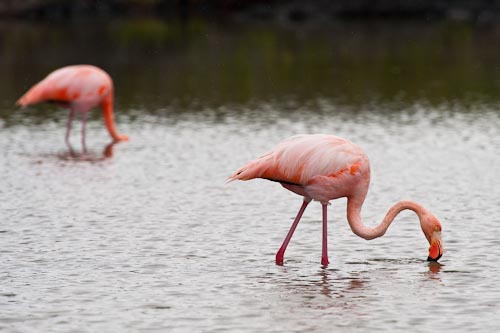The Queen of Galapagos has moved again overnight and we awake at anchor off the island of Santa Cruz, in the northern part. We are alone, no other yacht can be seen anywhere and we have a special expedition ashore planned.
The white sand expanse of beach here cannot be reached by road or footpath, the only way in or out is by boat. The isolation makes this the perfect spot for the Pacific Green Turtle to lay her eggs at night and as soon as we reach the shore we see evidence that last night was just one such evening.
Large tracks made as if by a 4 x 4 off-roader lead the way from the water to a mound in the sand. Here one large female has clearly laid and buried some of her clutch of what could be up to 200 eggs. Galapagos is the only place in the world where this species of turtle lays her eggs, though the seagoing reptiles can be found all over the Pacific Ocean.
Each turtle returns to the same beach, on which she herself emerged from inside a leathery like shell no bigger than a ping pong ball, to perpetuate the species. The eggs incubate in the sand under the hot equatorial sun, females will be born if the ambient temperature stays higher than 31o centigrade. Make it 27o or less and chances are all the babies will be boys.
A little further along the beach we see the Lava Gull with his distinctive black hood and grey ash coloured body. He is just of 400 of these birds thought to exist in the world and all of them here in the Galapagos. Beside him the Wandering Tatler with his distinctive yellow legs chases the same food in the seawater pool.
Behind the beach are lagoons filled with brackish water and it is here that the Greater Flamingos feed in small groups. They are seeking a shrimp like krill that develops well in this type of water. It takes them around 12 hours each day to get enough to eat.
Here in the Galapagos, the pretty flamingo is an endemic sub species of the bird most people recognise instantly but these are more pink than their cousins. The total number of birds in this sub species is thought to number just 500 but since each year the hen bird will lay one egg and there are few predators this number is showing signs of remaining steady. Nearby feeding in the same waters there are Black Necked and Common Stilt Herons.
Thinking of food, we are reminded that despite the hearty breakfast eaten before we came ashore, it is nearly lunchtime. The panga comes into the beach and we are whisked off the sand and transported back to Queen of Galapagos where our ever helpful crew help us on board and hand us glasses of freshly pressed fruit juice. It is so nice to be spoiled.
Queen of Galapagos is available for charter through Robert Shepherd at Edmiston

